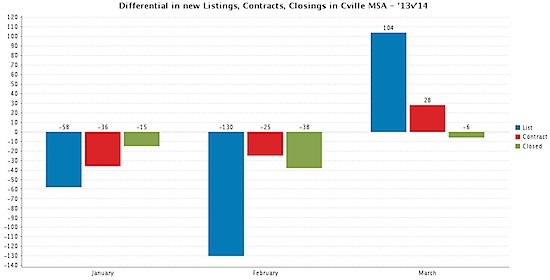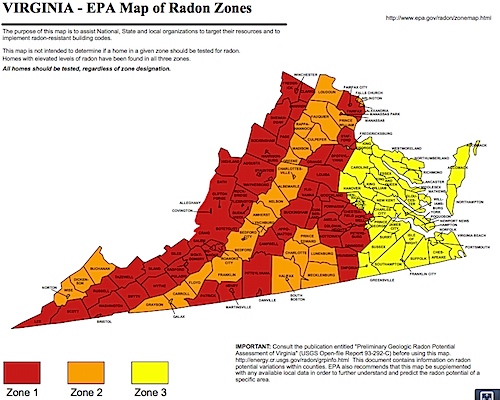I’ve said to my clients often enough that “I Like Radon” that one of them suggested I write a story with this title.
Sure, radon is a colorless, odorless gas that emanates from the earth’s crust that causes cancer.
Sure, the Charlottesville area is in Zone 2 of the EPA’s Map of Radon Zones. “(Zone 2 counties have a predicted average indoor radon screening level between 2 and 4 pCi/L(orange zones):
I still like radon. So why do I like radon?
I like radon in real estate negotiations because the solution to radon is known and relatively inexpensive. Generally, in my experience, a radon mitigation system costs between $800 and $1500. In the scope of a real estate transaction, that’s relatively insignificant.
Let me distill this page which is chock full of lots of radon information into an easily digestible sentence or two that is relevant to those (who may be seeking to buy a home) in the Charlottesville area:
– We have radon in our area – generally at least 50% of the homes I see tested have actionable levels of radon.
– You might as well get a test during the inspection period (it costs ~ $150)
– I don’t think radon is that big of a deal, but it’s a good negotiation item and it’s easily remediable.
– I don’t see radon (or radon mitigation systems) as having any impact on market value
From an NPR story a couple years ago that put context to the radon risk conversation (I wrote about it then, too):
Phil Price, a physicist at Lawrence Berkeley National Laboratory in California, has spent a lot of time studying radon. He is willing to accept the government’s rough estimate that radon causes about 21,000 deaths from lung cancer each year. But, he says, people should know something about that number.
“A large fraction of those estimated deaths are thought to be among smokers,” he says. “One way to think of it is it’s just one of the things that goes along with smoking, is that it increases your chance of radon-related lung cancer.”
The EPA estimates that among people who have never smoked, radon accounts for fewer than 3,000 radon deaths each year. The huge difference in risk is because smoking and radon appear to have a powerful synergy when it comes to lung cancer.
This is what I tell my clients – “ a radon mitigation system accomplishes at least three things –
1) Provides peace of mind – for homeowners and buyers
2) Can be an asset when you sell your home – it’s one less potential objection from the buyers
3) It provides for a safer environment in which to live.
4) Anecdotally I’ve heard that a radon mitigation system can help to keep a basement dry (the air, not water infiltration)
5) There are
lots of ways to die; life’s too short to worry about all of them and/or mitigate all risks.
Related reading:
– Homebuyers – Caution on Radon, Builders’ Reps and No Representation
Read More




